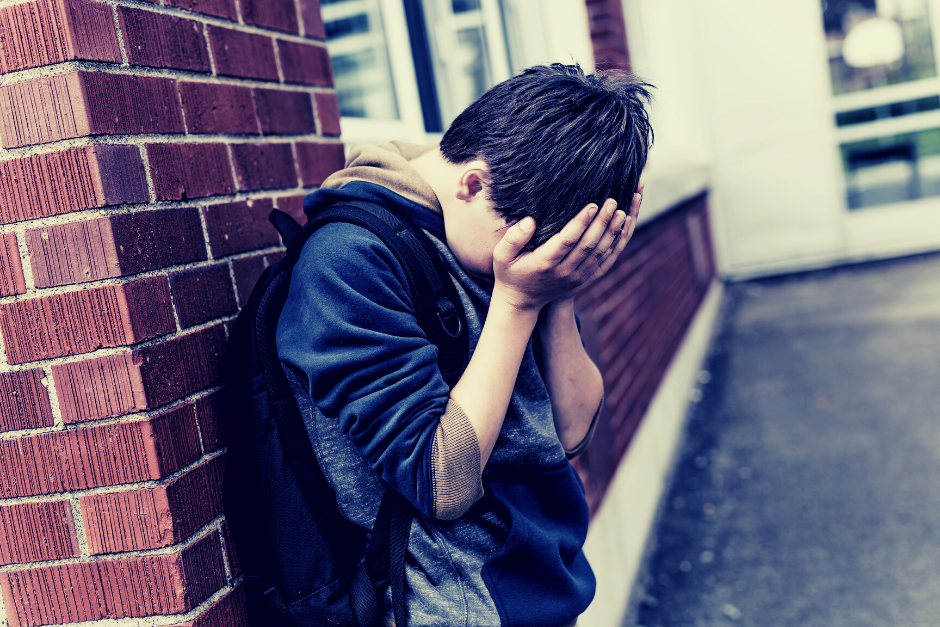June is National PTSD Awareness Month. More adolescents and teens in the United States struggle with PTSD than you might think, and the trauma they’ve experienced may look different from what you might imagine.
Post-traumatic stress disorder is a condition people commonly associate with soldiers who have experienced combat, victims of violent crime or survivors of natural disasters. However, the acute trauma that triggers PTSD can take different forms, especially when we see young people present with this condition.
Long-term sexual abuse or domestic violence, school shootings, grief and loss as well as extended periods of intense bullying, including cyberbullying are situations clinicians frequently encounter when treating individuals between the ages of 12 and 21. Moreover, as researchers study the impact of the pandemic on adolescent and teen mental health, they are discovering that the circumstances of the last year and a half have been traumatizing for many young people, which suggests that we will see more cases of PTSD.
What is PTSD?
When you’re in a stressful, threatening or dangerous situation, your body produces hormones and chemicals as part of the “fight-or-flight” response. The body is preparing itself to either fight off the danger or run from it. This is traumatic stress. Usually, when the danger is over, the body goes back to normal after a time. But when someone has PTSD, their stress response system doesn’t switch off.
According to the American Psychiatric Association, “People with PTSD have intense, disturbing thoughts and feelings related to their experience that last long after the traumatic event has ended. They may relive the event through flashbacks or nightmares; they may feel sadness, fear or anger; and they may feel detached or estranged from other people. People with PTSD tend to have strong negative reactions to something as ordinary as a loud noise or an accidental touch.”
Young People and PTSD
More than two-thirds of adolescents age 17 and under, report having experienced a traumatic event in a survey conducted by the Substance Abuse and Mental Health Services Administration. The research shows that nearly all children who experience trauma show some level of distress or behavioral change after the event. Of those children and teens, three percent to 15 percent of girls and one to six percent of boys develop PTSD, according to the National Center for PTSD.
Rates of PTSD are higher for certain types of trauma survivors. Children and teens who go through the most severe traumas have the highest levels of symptoms. For example, more than 75 percent of children who experience a school shooting and approximately 90 percent of those who are sexually abused develop PTSD.
What to Look for
Any child who has experienced trauma can benefit from processing what happened to them with a mental health professional. This becomes especially critical when you start seeing signs and symptoms.
Some signs that your child may be suffering from PTSD are:
- If your child’s symptoms only started after a traumatic event and were not already present.
- If your child is experiencing symptoms of traumatic stress for more than a month after the event.
- If their level of anxiety is so severe that it interferes with daily functioning.
Symptoms can include the following:
- Flashbacks and nightmares
- Panic attacks
- Confusion and inability to make decisions
- Difficulty sleeping
- Finding it hard to enjoy once pleasurable activities
- Irritable, impulsive or aggressive behavior
- Emotional numbness
- Separation anxiety or the inability to be alone
- Constantly feeling on edge
- Avoiding people, places, or situations that trigger memories of the traumatic event
PTSD interferes with a young person’s ability to develop and learn normally. Those who struggle with the condition are more likely to develop substance use problems and suicidal ideation. Fortunately, there are evidence-based treatment approaches that are extremely effective in helping people deal with their trauma and overcome PTSD. If your child has experienced trauma, monitor them carefully and reach out for help when they need it.

